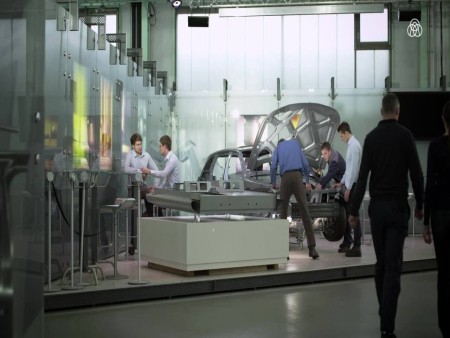Every gram counts. The weight saved in a car has a real impact – no matter how small. Using a lighter chassis affects numerous factors in the motor industry: fuel consumption, production costs, and pollutant emissions (of CO2, for example). Lightweight construction is therefore one of the most important topics for automotive manufacturers and their suppliers in this industry.
The challenges of lightweight construction
The task of manufacturing lightweight materials has not become any simpler for supplier companies over time: “In the past, innovations from one generation to the next made it possible to save several kilograms of sheet metal. These days, modern car bodies are usually at such a high standard that the research that goes into shaving off a single kilogram has become much more complex,” says Dr. Volker Smukala, who works in product management for coated products at thyssenkrupp Steel.
Dual-phase steel: lightweight and stable
There are numerous scenarios in which lightweight construction can save kilograms of material in the production of a single part for a car. Sometimes, only a quarter of the usual material is required – such as when lighter sheet metal is used to make the doors of a passenger car.
This radical reduction in weight is made possible by a new thyssenkrupp Steel product: DP-K® 290Y490T dual-phase steel. Thanks to this product, the shell can be made at a thickness of only 0.55 millimeters – and this even includes a hot-dip galvanized or zinc-magnesium protective layer.
Importantly, the reduced thickness does not result in a loss of stability.
Series production of a thin line
In the past, dual-phase steels were generally not suitable for use in vehicle body shells. But thanks to the new, slim line and innovative coating options, it has now also become an attractive option for lightweight construction in the automotive industry. Recently, DP-K® 290Y490T with a hot-dip galvanized coating has become ready for series production. The material is thus now being produced and offered as a standard product.
Several manufacturers in the automotive industry have started to test the product. This new materials technology is not only suitable for doors, but can be used for virtually the entire shell of a car, including the hood, roof, tailgate, and mudguard.
High level of corrosion protection
Thanks to its extremely narrow thickness, dual-phase steel meets the requirements of lightweight automotive construction. This material also provides an additional major advantage: its coating. For the first time, it is now possible to produce this steel with a hot-dip galvanized or zinc-magnesium coating.
Together with electrolytic galvanizing, the weight-saving, ultra-thin sheets can now be integrated into any corrosion protection concept. Moreover, this does not put a blemish on the overall appearance of the auto metal.
Zinc-magnesium coatings offer particularly large advantages.
It also helps to conserve resources and thus goes easy on the environment, since the technology requires about 30 percent less zinc than a traditional zinc coating. Therefore, DP-K® 290Y490T meets the objectives of lightweight construction both for the steel itself as well as for the coating.




